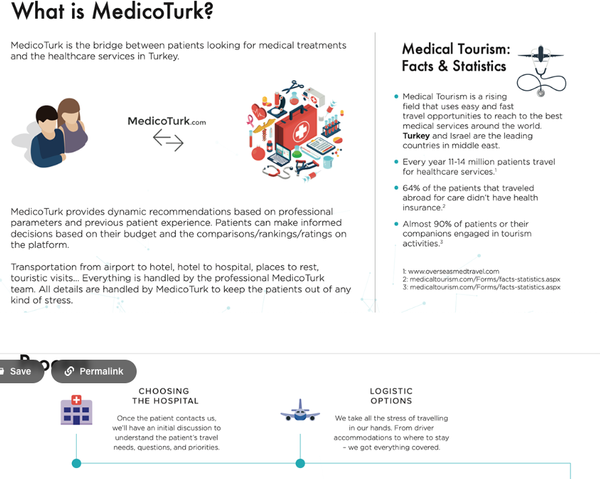All you need to know about apps for traveling
Are You Truly Ready to Put Your Mobile or Web App to the Test?
Don`t just assume your app works—ensure it`s flawless, secure, and user-friendly with expert testing. 🚀
Why Third-Party Testing is Essential for Your Application and Website?We are ready to test, evaluate and report your app, ERP system, or customer/ patients workflow
With a detailed report about all findings
Contact us nowTable of Content
Whether we like it or not, mobile phones occupy an important place in our lives. They are used to call, send messages, make appointments, find your way in the city, and consult your accounts. In short, it is difficult to do without them on a daily basis. As you know, when we travel, it's often the same thing! That’s why travel app development is in demand today, whether it is to give news to your loved ones, find the small restaurant in the vicinity, take photos, our phone is a privileged tool that makes our life easier even on the other side of the world.
The process and features of creating a travel application
A professionally developed application won’t be cheap. It will be necessary to hire a designer to create an application adapted to the needs of the company, but above all, to achieve good specifications, which should ideally include:
- The context of the development of the app;
- The objectives;
- Target clientele;
- The type of platform, Android or iOS;
- Content to be produced;
- Navigation (tabs);
- The languages of dissemination.
In addition, you need to define the main features or services offered: list of accommodations available in real-time, tourist routes, maps (geolocation), sharing on social networks, videos, photos, audio files, etc. However, it’s important that access to services must be intuitive and fast!
One more important thing to remember is content management. It will be necessary to provide for the maintenance and updating of the information included in the travel app.
Moreover, such a tool as attendance statistics is important to define a solution that will allow the evaluation of attendance (pages viewed, hours and duration of visits, origin of mobile users, keywords, etc.).
What is the infomedia approach and how to use it for your business?
If we are talking about the infomedia approach we need to know that it is an information or community site that produces and disseminates qualified information and offers a direct link to place an order from an online merchant. The development of an application can represent a significant investment, which is not within the reach of all scholarships, hence the interest of allying with intermediaries capable of enhancing the offer of tourism companies.
Tourist intermediaries are mainly positioned upstream, in the preparation of the trip, by providing practical information. However, they are increasingly trying to adapt their content to travelers in mobility situations.
Some existing tourism applications can play this role as an intermediary. Mobility is now a must-have in modern travel. Companies must adapt to it, and the creation of mobile applications is one way among others.
How to create an outstanding travel app for business?
There’s no doubt that your first tool must be thinking beyond borders and a professional development team, such as Perpetio. In essence, a travel application is intended for an international audience. Regardless of the destination, a user must be able to use the application in his native language. Developers generally observe a strong growth in the number of downloads of their applications once they are localized for a market.
All leaders in the publishing of travel applications, explain that the implementation of a localization strategy has resulted in an increase of more than 200% in the number of downloads of the brand's applications on the app stores. In addition, to optimize the referencing of an application on the app stores, the description of the application must be adapted to the keywords echoing users in each target country, as well as their concerns.
Integration of a human element is one more tool to make your application successful. The integration of a human dimension within an application makes it possible to reassure the consumer, especially when he is abroad. The simple possibility of exchanging with someone can sometimes temper frustration in the event of an incident and thus limit negative experiences.
Before considering launching its application on the market, it is essential to test all the features and updates offered on mobile devices, in real-life situations. Software bugs or bad user interfaces can disqualify an application even before it has had the slightest chance of emerging. To overcome these flaws, application publishers must use resources outside their company, whether from their own customers or from industry experts. Although testing itself is essential, knowing who is the origin of the test, and where the solution is tested is just as important. Companies can learn more about the experience of their users, thanks to product testing by real people. Testing on real devices, with real users, in real conditions is the only way to understand in detail the use of an application by consumers once it is launched.
How to find professional development services?
A digital service can have hundreds of mobile applications and websites in its portfolio. It is not the quantity that counts, but the difficulty that each project represents. If an agency has only created simple applications or websites, then you will have to ask yourself if this is enough for the needs of your company. Developing a mobile game or setting up a blog is not the same.
A mobile game requires the writing of more or less complex algorithms and the intervention of several experts in design, UX, and programming. Look for this complexity in the portfolio to be sure to select the best mobile development specialists.
Test the websites and applications of the portfolio yourself. It's easy. Simply go to the websites presented to get a better idea of the work the agency is able to do. Also, go to the application's download page, and watch user notes and comments. Note that websites, and especially mobile applications, are evolving rapidly and it is quite normal to temporarily remove them for updates. This means that it doesn't matter if some links don't work. However, if you can't find any projects online, there is something to alarm you about.
Pay attention to the design of the projects presented in the portfolio. The objective is to avoid agencies that "stick" the same style to all their projects. Each company is unique and your agency should know how to adapt to your needs.











